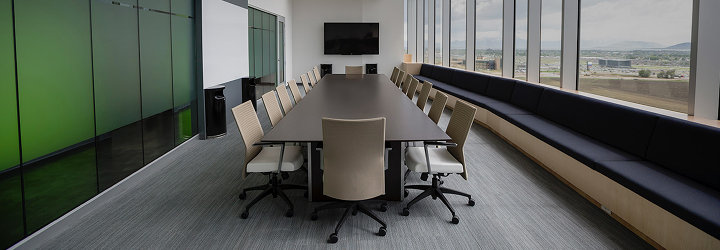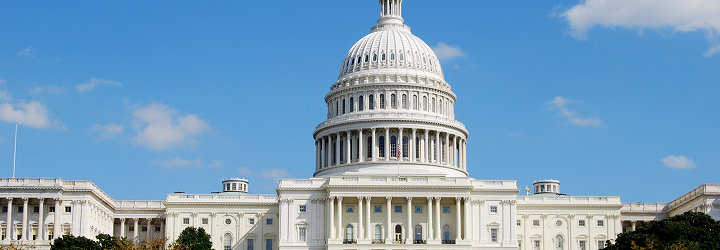The attorneys at Burch & Cracchiolo are here and available to help you with your questions and legal needs during the Coronavirus pandemic. Below are some of the most asked questions from our real estate, intellectual property, construction, employment and labor and family law attorneys. We know there are many more and we are ready and willing to partner with you during these uncertain times.


How Arizona Commercial Landlords are Navigating COVID-19
 The coronavirus (COVID-19) pandemic is causing massive disruption to businesses across the globe, causing many businesses to stop paying rent. These unparalleled default rates are directly impacting millions of commercial landlords that are simultaneously scrambling to assess their contractual rights, obligations, and remedies. This is a very fluid situation, and the following are some general strategies to help commercial landlords navigate these uncertain times.
The coronavirus (COVID-19) pandemic is causing massive disruption to businesses across the globe, causing many businesses to stop paying rent. These unparalleled default rates are directly impacting millions of commercial landlords that are simultaneously scrambling to assess their contractual rights, obligations, and remedies. This is a very fluid situation, and the following are some general strategies to help commercial landlords navigate these uncertain times.
Anticipatory Breach
Several tenants are stating they will not be paying rent, at least temporarily. Such statements by tenants may constitute anticipatory breaches. “[I]f one party unequivocally indicates he will not perform when the date arrives, an anticipatory breach is committed.” United California Bank v. Prudential Ins. Co. of Am., 140 Ariz. 238, 277, 681 P.2d 390, 429 (Ct. App. 1983). “We have recognized that an action may be maintained for breach of contract based upon the anticipatory repudiation by one of the parties to the contract.” Diamos v. Hirsch, 91 Ariz. 304, 307, 372 P.2d 76, 78 (1962). Before treating it as an anticipatory breach, Landlords must be certain that such statements are in writing and unequivocal, and to avoid risk, Landlords may want to proceed with the normal default notice procedures, such as the failure to pay rent.
Force Majeure
Some tenants are attempting to use force majeure clauses (i.e., “Acts of God”) found in many commercial leases to justify their obligations under the lease – and primarily paying rent and operating their business. Theses clauses are rarely invoked. Their application depends on the specific language of the lease and the surrounding circumstances. However, even if such a clause were applicable, many force majeure clauses still require the payment of rent and would only relieve tenants from business operating clauses or similar provisions. Each clause is unique and requires a case-by-case analysis.
Commercial Frustration
Some tenants are seeking to avoid their performance based on the common law doctrine of frustration of purpose. According to one Arizona court, “[t]he doctrine of impossibility does not operate unless the contractual duties would be impossible for Anyone to perform.” Marshick v. Marshick, 25 Ariz. App. 588, 592, 545 P.2d 436, 440 (1976). Even a financial crisis does not relieve contractual duties. “‘[T]he fact that one is unable to perform a contract because of his inability to obtain money, whether due to his poverty, a financial panic, or failure of a third party on whom he relies for furnishing the money, will not ordinarily excuse nonperformance, in the absence of a contract provision in that regard.’” Marshick v. Marshick, 25 Ariz. App. 588, 592, 545 P.2d 436, 440 (1976), quoting 17 Am.Jur.2d Contracts § 415, at 867-68. Although difficult for many businesses, it does not seem performance is “impossible” as stated in the Arizona cases cited above.
Commercial Evictions and Lockouts
In the event of a breach, commercial landlords in Arizona are entitled to perform peaceable lockouts or judicial evictions. Most landlords choose to perform commercial lockouts because they are faster and less expensive than evictions. When performing a lockout, it is very important to make sure all default notices have been followed precisely and that a lockout is permitted under the lease terms or A.R.S. § 33-361. Additional procedures must be followed after a lockout, including creating an inventory, temporarily storing the property, and following the sale or disposal provisions of A.R.S. § 33-362 and the lease terms.
On April 6, 2020, Governor Ducey placed temporary restrictions on commercial landlords under Executive Order 2020-21. The order stops evictions and lockouts of small businesses tenants (defined as 500 or less employees) until May 31, 2020. The order seeks to limit evictions and lockouts to only those businesses that are experiencing financial hardships caused by the COVID-19 pandemic, but it does not provide any criteria to determine such financial hardship. The executive order does not “reliev[e] any individual or business of the obligation to pay rent.” Thus, commercial tenants that do not pay rent risk being in default and further risk being evicted or locked out after the temporary restrictions end.
Rent Relief and Workouts
While landlords may have stronger legal rights, especially when it comes to receiving rent payments, they should seriously consider negotiating with tenants. Otherwise, they may find themselves with unwanted vacancies, limited options to collect rents, and little or no revenue to pay their own expenses. Meanwhile, tenants need to recognize that landlords are facing unprecedented levels of requests for rent relief (and all at the same time period), and it may not be feasible for landlords to grant rent relief. Both parties may consider such things as:
- Rent Reduction. The parties could discuss reducing the tenant’s rent for a portion or all of the remaining lease term. For retail leases, one could convert base rent to percentage rent.
- Deferred Rent. The parties could agree to defer a portion of the tenant’s rent temporarily, but the tenant would have to repay the deferred rent at a later time, either in a lump sum or by increasing subsequent payments.
- Rent Abatement. If a tenant is already past due on rent payments, a landlord may agree to forgive a certain amount of the past-due rent but only if the tenant remains current thereafter.
- Loan Conversion. Rather than abating past due rent, a landlord may agree to convert the past due rent into a loan payable over time. The tenant would, however, continue to pay the current rent.
The commercial leasing team at Burch & Cracchiolo is ready to assist. For specific questions or requests, please contact attorneys Andy Abraham (aabraham@bcattorneys.com), Casey Blais (cblais@bcattorneys.com), or Jennifer Delgado (jdelgado@bcattorneys.com).

Proactive Measures for Commercial Tenants in These Uncertain Times
 The COVID-19 pandemic caught us all off-guard, and with so much uncertainty ahead of us, it may be difficult for commercial tenants to know how to approach lease and rent concerns with their landlords. The following are some proactive measures and issues to consider for tenants during this unprecedented time:
The COVID-19 pandemic caught us all off-guard, and with so much uncertainty ahead of us, it may be difficult for commercial tenants to know how to approach lease and rent concerns with their landlords. The following are some proactive measures and issues to consider for tenants during this unprecedented time:
- Review the lease terms – Generally, the terms of a lease will govern the relationship between a landlord and tenant above anything else. Lease provisions to look for:
- Force Majeure. Some leases temporarily excuse performance obligations under certain circumstances, like acts of God, riots, and natural disasters.
- Abatement of Rent. Tenant may be excused from paying rent under certain circumstances.
- Access. The lease may address tenant’s right to access the leased premises.
- Casualty and Condemnation. How does the lease define these terms and are they broad enough to include a temporary taking or temporary denial of access?
- Security Deposits. Consider whether the landlord can use tenant’s security deposit to cover rental losses and whether tenant is obligated to replenish the deposit.
- Events of Default. Review and be familiar with what constitutes a default under the lease and what are landlord’s remedies.
- Personal Guaranty: Are the principals of an entity tenant obligated to perform and/or pay rent on behalf of the tenant if it defaults under the lease?
- Consider state and federal governmental actions – As the COVID-19 pandemic is a quickly-evolving situation, public information is changing on a daily basis. Local, state and federal mandates may require a tenant’s or landlord’s business to cease operating, and/or may provide additional economic relief or a moratorium on evictions for tenants. In Arizona for example, Governor Ducey issued an executive order on April 6, 2020, that halts evictions for small businesses and nonprofits until May 31, 2020. Keeping up-to-date on these measures will be helpful in determining a tenant’s options.
- Review insurance policies and lease terms relating to insurance coverage – Tenants should review their current business insurance coverage relating to business interruption and determine whether pandemics are excluded covered events, as well as review their lease terms to determine if the lease requires their landlord to carry loss of rent coverage.
- Open a dialogue with your landlord – Landlords are also feeling the weight and uncertainty of the pandemic as tenants are failing to pay rent on time and lenders are tightening their purse strings. Tenants should consider reaching out to their landlords sooner than later if they are struggling with fulfilling lease obligations. It may be possible to negotiate a temporary abatement, deferral or reduction in rent, or otherwise reach an amicable adjustment of lease terms.
For specific commercial leasing questions or requests, please contact attorneys Andy Abraham (aabraham@bcattorneys.com), Casey Blais (cblais@bcattorneys.com), or Jennifer Delgado (jdelgado@bcattorneys.com).

Construction in the Age of Pandemic
 Like every industry, the construction industry is dealing with the ongoing uncertainty created by this global pandemic. The situation is evolving and the facts on the ground change constantly.
Like every industry, the construction industry is dealing with the ongoing uncertainty created by this global pandemic. The situation is evolving and the facts on the ground change constantly.
Governor Ducey’s Executive Order 2020-12, issued on March 23, 2020, designated construction, building management, and landscape management as essential infrastructure operations, and building and construction trades as critical trades under the category of essential businesses and operations. In addition, Executive Order 2020-17, issued on March 26, 2020, directs that for professional licenses that would otherwise expire between March 1, 2020 and September 1, 2020, renewal is deferred for six months from the date of expiration. This applies to registered Architects and Engineers regulated by the Board of Technical Registration; and licensed contractors regulated by the Registrar of Contractors.
On March 30, 2020, Governor Ducey issued Executive Order 2020-18, which essentially constitutes a stay at home order for Arizona. The Governor’s earlier Executive Order broadly defined essential infrastructure operations and essential businesses and operations and includes the construction industry within that defined category, therefore absent further clarification, it does not appear that the stay at home order will adversely impact construction operations except that businesses that choose to remain open must establish and implement social distancing and sanitary measures established by the U.S. Department of Labor or the Arizona Department of Health Services.
Similarly, the Department of Homeland Security’s Cybersecurity & Infrastructure Security Agency issued advisory guidelines characterizing various aspects of residential and commercial construction as essential infrastructure businesses.
Construction industry groups currently interpret the Federal guidelines as acknowledgment that that construction activities are included in its list of essential critical infrastructure workers and that construction activity can continue to occur in a way that protects workers and the general public from the spread of coronavirus.
What should construction companies do right now?
- protect staff – have a safety plan to reduce exposure
- decide what ongoing operations are essential and identify the individuals needed for those operations
- establish staff rotations to reduce exposure
- review all contracts
- review insurance policies
- consult with your lawyer, insurance agent, and financial advisor
What should contractors do on their construction sites?
- institute security procedures and requirements
- communicate with clients, with staff and with subcontractors
- document current conditions: video and photograph the site daily; use daily reports to track manpower both your own forces and trade contractors; keep track of who is working from home; monitor job progress carefully – update CPM schedules regularly
What should contractors anticipate on their projects?
- supply chain disruptions
- extended durations due to labor shortages and/or lower productivity
- price escalation for labor and materials
- project delays, suspensions, terminations
How should contractors address these issues?
- document, document, document
- communicate with all stakeholders – Clients, Employees, Subcontractors, and your attorney, insurance agent and financial advisor
- update schedules
- mitigate damages to the extent possible
It is critically important to understand the legal landscape as it may relate to potential claims, delays, suspensions and terminations.
- Understand Force Majeure as well as Delay/Time Extension Provisions in Contracts and the triggering events for Force Majeure and other Delay/Time Extensions
- On Public Works Contracts understand any applicable regulations that may address: excusable delay, time extensions, changes, suspended work, stop work orders, termination, indemnification by the government, relaxing qualifications.
Flexibility is important. Be prepared to negotiate with stakeholders on each project
- remedies may vary in different contracts
- the attitudes of different Owners may vary
- plan how you will claim for impacts
- discuss potential impacts with Owner in advance
- if work is disrupted, plan how to complete work and discuss with Owner
Evaluate steps contractually required to excuse performance and reserve remedies
- timely notice
- mitigation of damages
- adhere to the contract’s dispute resolution provisions
- be aware of any ongoing reporting and due diligence obligations
- understand that the failure to follow contractual terms could result in a waiver of Force Majeure remedies and subject you to delay damages and liquidated damages
Congress has passed the Coronavirus Aid Relief and Economic Security (“CARES”) Act. It is important to understand what the CARES Act does and does not do.
The CARES Act does not make Contractors whole for losses incurred due to the coronavirus or protect employees retirement or health plans.
The CARES Act does not provide additional federal funding for improving infrastructure. Instead it provides Federal Agencies with additional funding and repurposes prior funding for operations and administrative expenses. It also assists “partners” with additional resources to support their operations and mitigating impacts of any lost revenue. Those partners are: airlines, airports, and public transit agencies.
What does the CARES Act do for construction companies? It provides loans and tax breaks.
- Loans – the Paycheck Protection Program allows companies with less than 500 employees to obtain loans to pay employees and overhead costs while continuing operations. The Paycheck Protection Program is run through the Small Business Administration. The Exchange Stabilization Fund Loan Program is for companies with more than 500 employees and is run through the U.S. Department of the Treasury and the Federal Reserve.
- Taxes – tax credits available for employers who implement the new federal paid leave mandate; deferral of employer payroll tax payments through January 1, 2021; allowing companies to carry back net operating losses for up to five years; suspends the limitation on pass-through business losses that will allow Owners of pass-through businesses to fully deduct any losses they incur this year; suspends application of limitations on interest expense deductions which effectively avoids penalizing businesses for borrowing during the crisis; and fixes the retail glitch drafting error from the 2017 Tax Reform law that unintentionally increased the cost of many construction projects such as improvements for restaurants, retail establishments, or commercial office property.
Associated General Contractors of America’s analysis of the CARES Act can be found here.
In addition, the AGC’s website has frequent updates on various aspects of the impact of Covid19 on the construction industry.
For any specific construction related questions contact Mike Dulberg at mdulberg@bcattorneys.com

IP Protection in the Time of COVID-19
by Susan Chetlin
 As we all adapt to the rigors of social distancing and the requirements for working from home (“WFH”) to confront the COVID-19 pandemic, there are several opportunities and potential threats to keep in mind when it comes to protecting (IP).
As we all adapt to the rigors of social distancing and the requirements for working from home (“WFH”) to confront the COVID-19 pandemic, there are several opportunities and potential threats to keep in mind when it comes to protecting (IP).
-
There will be a lot of new IP created. Especially when there is very little positive news of late, let’s start out with a brief mention of the opportunities. Given the dire need for new types of services, treatments, tests, personal protective equipment (PPE), medical devices and ways for people to connect virtually, there will surely be new inventions and IP worth protecting as we wrestle with COVID-19. Case in point, Sir James Dyson, billionaire founder of Dyson – known for its vacuum cleaners and air dryers – heeded the call and invented a portable ventilator in 10 days. He plans to donate 5,000 units.
Many scientists and inventors in the U.S. have jumped into the fray, as well. The New York Times profiled several ongoing efforts, including a pathologist and medical device designer who fashioned a ventilator in two days from a blood pressure cuff pump, car valves and generic hospital supplies; researchers at Clemson and the University of South Carolina who developed a 3-D printed valve that allows two patients to share a ventilator intended for one; and, many, many more. See Hive Mind of Makers Rises to Meet Pandemic
The angels of our better nature can also rise to the fore while nonetheless protecting IP. A group of scientists, lawyers and entrepreneurs have appealed to IP holders to take what they have called the Open COVID Pledge. In taking that pledge, IP owners agree to share their intellectual property with those seeking to combat the coronavirus through an open royalty-free license during the period of the pandemic without fear of litigation. See opencovidpledge.org.
In addition, biotech companies large and small are entering into technology sharing collaborations to develop coronavirus vaccines and cures as soon as possible. Case in point, Sanofi and GlaxoSmithKline recently announced their collaboration and technology sharing efforts to develop a vaccine that, according to the joint press release, is affordable and offers “fair access to people in all countries.” See sanofi.com.
The United States Patent and Trademark Office (“USPTO”) has also pitched in by facilitating access to information about coronavirus-related inventions. On May 4, 2020, the USPTO announced its Patents4Partnership initiative, which is a web-based marketplace platform for coronavirus-related inventions. According to the USPTO, this platform will “facilitate the voluntary licensing and commercialization of innovations” in coronavirus-related technologies and provide ready access to relevant patent information. As of June 4, the platform listed 217 such inventions by reference either to their U.S. patent number or publication number with links to those documents in the USPTO database. The availability for licensing was also shown. The USPTO indicates that the platform “provides a link to sources that include the licensing information.” While previously no such links were readily apparent, they have now been provided. Some links are more useful than others.
And, to accelerate innovation, particularly for small companies, the USPTO has waived the pricey fee for requesting prioritized examination for small and micro entities with COVID-19 related inventions. In addition, the USPTO said it would complete examination for these priority applications within six months, if applicants respond promptly to all correspondence.
To make it easier for everyone to learn about resources the USPTO is providing to respond to the pandemic, on June 3, the USPTO launched its COVID 19 Response Resource Center, which contains explanations and links for the two programs discussed above.
- WFH provides extra time to concentrate on IP protection that may have been relegated to the back burner. With employees working remotely and regaining time otherwise lost to commuting, in-person meetings and the like, they may be able to give their full attention to preparing that invention disclosure that never seemed to rise to the top of the stack. And, with plenty of time to reflect without distraction, they may come up with new inventions. See item 1.
- Be mindful of trade secret and confidential information protection with everyone WFH. Once we change our environment, we change our habits, so it is important to have everyone take a critical look at their home environments and the manner in which they work from home so that your company’s trade secrets and confidential information are protected:
- Everyone is having virtual meetings using Zoom, GoToMeeting, WebEx and similar platforms. Is any confidential information visible to others on employees’ home desks or in the background of home workspaces? Is confidential information on a whiteboard or elsewhere visible during these meetings or to anyone else in the home environment?
- Do your employees have a home virtual assistant such as Alexa or Google Home? Since they are always listening, virtual assistants should be turned off when business is conducted via phone or placed out of range.
- Confirm that everyone is using secure connections from their homes and are just as vigilant at home as they are in the office about confronting malicious emails designed to penetrate the business network.
- While confidential shred bins are scattered about the office, there aren’t any at home. Remind employees not to throw out confidential documents in the home trash.
- In short, take care that your company’s trade secret and confidential information (including that of third parties that you are obligated to keep confidential) are subject to reasonable efforts to keep that information secret even while employees are WFH.
- Various governmental agencies have made (and will continue to make) important changes in how they operate.
-
United States Patent and Trademark Office (USTPO): The USPTO is up and running – with some modifications. The USPTO had already mandated the use of electronic filing and has had a robust teleworking program for its examiner cadre for some time. The offices are now closed to the public and all in-person examiner interviews and hearings are being conducted remotely. Section 12004(a) of the recent stimulus bill – the CARES ACT — now authorizes the USPTO to “toll, waive, adjust or modify any timing deadline,” among other things, if the rights of applicants, registrants, patent owners or others are prejudiced. On March 31, 2020, the USPTO said it will extend various dues dates falling between March 27 – April 30, 2020 for certain trademark and patent matters, so long as the delay in filing or payment is due to COVD-19 outbreak as detailed in the USPTO guidance. The USPTO had previously indicated that it would waive petition fees to revive patents, trademarks and applications that were abandoned or cancelled because of failure to take action related to the outbreak.
In addition, on April 28, 2020, the USPTO issued a notice extending various due dates falling on or between March 27, 2020 and May 31, 2020 until June 1, 2020, so long as the delay is due to the COVID-19 pandemic as outlined in the guidance.
At the end of May, 2020, the USPTO updated its guidance again. On the patent side, filings that would have been deemed untimely if filed by June 1, 2020 can now be timely filed by July 1, 2020, but only for micro and small entities. Large entities who need relief will have to petition the Director for an extension of time or revival and pay the required fee.
On the trademark side, relief expired on May 31, 2020. Applicants who missed various deadlines because of the pandemic will have to petition the Director, but petition fees will be waived if the late filing is accompanied by a statement that the delay was due to the pandemic.
- The Copyright Office: Like the USPTO, the Copyright Office is closed to the public. Copyright applications are being accepted online and some adjustments have been made where the rules require the submission of physical deposits. The Copyright Office also received new emergency authority to adjust or waive deadlines under the CARES Act and it has done so with respect to certain deadlines. A new fee schedule (with mostly increased fees) went into effect on March 20, 2020 despite the coronavirus pandemic.
- Many foreign IP offices extended deadlines on multiple occasions, but those automatic deadlines are now expiring. For example, the European Patent Office has extended all deadlines after March 15 until June 2, 2020, with the possibility of additional extensions if the required showings can be met.
- There may be further changes for all of these offices depending on the circumstances.

Small Business Guidance & Loan Resources under CARES Act 2020
 Paycheck Protection Program (PPP)
Paycheck Protection Program (PPP)
The PPP authorizes up to $349 billion toward job retention and certain expenses for small business with < 500 employees.
Under the program:
- Eligible recipients may qualify for a government guaranteed loan up to $10 million.
- If all current employees are kept on payroll for eight weeks, the amount of the loan used for payroll, rent, mortgage interest, insurance premiums and/or utilities for that same 8 weeks (until June 31, 2020) are forgiven. Up to 100% of the loan is forgivable.
- Loan payments will be deferred for 6 months and may be deferred up to 12 months, interest rate is .5% and capped at 4%.
- No personal guarantee required.
- Forgiveness will require documentation verifying number of employees and pay rates, and canceled checks showing mortgage, rent, or utility payments.
- Amount forgiven not considered income to borrower.
- Applications are submitted directly to approved lenders starting April 3, 2020.
EIDL and Loan Advance
The Economic Injury Disaster Loan (EIDL) program provides small businesses with working capital loans of up to $2 million to help overcome temporary loss of revenue. These loans may be used to pay fixed debts, payroll, accounts payable and other bills that can’t be paid. The interest rate is 3.75% for small businesses and 2.75% for non-profits. Long-term repayments are offered in order to keep payments affordable, up to a maximum of 30 years. Terms are determined on a case-by-case basis.
Applicants must certify that the “loan is necessary due to uncertainty of current economic conditions caused by COVID19.” Application must be submitted and information required includes “gross revenues for the 12 (twelve) months prior to the date of the disaster (January 31, 2020)” and “costs of goods sold for the 12 (twelve) months prior to the date of the disaster (January 31, 2020),” if any.
Small businesses can also apply for an EIDL advance of up to $10,000. Funds will be made available within three days of a successful application and will not have to be repaid. EIDL grants do not have to be repaid even if you are ultimately denied an EIDL loan. Request for the advance is included with the EIDL loan application.
TO APPLY, GO TO https://covid19relief.sba.gov
SBA Debt Relief
The SBA Debt Relief program provides a reprieve to small businesses and under this program the SBA will pay the principal and interest of new 7(a) loans issued prior to September 27, 2020 and the SBA will pay the principal and interest of current 7(a) loans for six months.
SBA Express Bridge Loans
The Express Bridge Loan Pilot Program allows small businesses that currently have a business relationship with an SBA Express Lender to access up to $25,000 with less paperwork. These loans can be a term loan or used to bridge the gap while applying for a direct EIDL. If a small business has an urgent need for cash while waiting for decision and disbursement on EIDL, it may qualify for an SBA Express Disaster Bridge Loan. The bridge loan will be repaid in full or in part by proceeds from the EIDL loan.
For any specific related questions contact Susie Ingold at singold@bcattorneys.com

For Small Businesses and Employers: Families First Coronavirus Response Act (FFCRA)
 Signed into law March 18, 2020 and effective April 1, 2020, FFCRA applies to employers with <500 employees. The law enables employers to keep their workers on their payrolls, while at the same time ensuring that workers are not forced to choose between their paychecks and the public health measures needed to combat the virus. Among other things, it provides free coronavirus testing, enhanced unemployment benefits, and additional funds for Medicaid and nutritional programs. Importantly, it also requires 2 weeks of paid leave for COVID19 related purposes and it expands FMLA-type leave, with pay, for employees who must care for a child when schools or childcare are closed or unavailable. Employers that are subject to new paid leave requirements receive dollar for dollar tax credits.
Signed into law March 18, 2020 and effective April 1, 2020, FFCRA applies to employers with <500 employees. The law enables employers to keep their workers on their payrolls, while at the same time ensuring that workers are not forced to choose between their paychecks and the public health measures needed to combat the virus. Among other things, it provides free coronavirus testing, enhanced unemployment benefits, and additional funds for Medicaid and nutritional programs. Importantly, it also requires 2 weeks of paid leave for COVID19 related purposes and it expands FMLA-type leave, with pay, for employees who must care for a child when schools or childcare are closed or unavailable. Employers that are subject to new paid leave requirements receive dollar for dollar tax credits.
There are two main components of employee paid leave under Families First:
Emergency Family Medical Leave Expansion Act
- Requires up to 12 weeks leave for employees who are required to care for their child/children due to school or childcare facility closures.
- Employee must have been employed for at least 30 days.
- Employer must restore the employee to their original position upon return, unless certain conditions exist (i.e. position no longer exists).
- Rates of pay:
First 2 weeks = unpaid, unless the employee elects to use other available PTO.
Weeks 3-12 = 2/3 employee’s regular rate, $200 per day max, $10,000 total.
Emergency Paid Sick Leave Act
- Requires up to 80 hours (2 weeks) paid sick leave to any full-time employee, or the equivalent of two weeks’ time for part-time employees, due to the following:
- Employee is subject to an order of isolation or quarantine.
- Employee is told by a healthcare provider to self-quarantine.
- Employee has symptoms of COVID19 and is “seeking diagnosis.”
- Employee is caring for an individual who is subject to (1) or (2) above.
- Employee is caring for a child whose school or childcare is closed.
- Employee is experiencing a substantially similar situation designated by the Secretary of Health and Human Services.
- Rates of pay:
(1), (2) and (3) = employee’s regular rate, $511 per day max, $5,110 total.
(4), (5) and (6) = 2/3 employee’s regular rate, $200 per day max, $2,000 total.
Additional Guidance on FFCRA
- The paid sick leave in the new law is in addition to any other paid leave that an employer already provides. The paid sick leave under the new law does not carry over from one year to the next. Any leave an employer provided prior to April 1 does NOT count towards the two-week entitlement.
- Employees may elect to use existing paid leave they have available to supplement the two weeks of FFCRA leave that are unpaid, but employers cannot require employees to use other available paid leave concurrently.
- In determining whether you’re a “small” business and one with fewer than 500 employees, separate corporations will generally be considered separate employers unless they meet the standards for joint employment under the FLSA or the integrated employer test under the FMLA.
- The Act requires that certain notices be provided to employees regarding the new requirements. The notice must be posted in a conspicuous place and should be included near other required employer notices.
- For a copy of the DOL’s official notice to post in your workplace, go to: https://www.dol.gov/sites/dolgov/files/WHD/posters/FFCRA_Poster_WH1422_Non-Federal.pdf
- The Act provides a dollar-for-dollar reimbursement through tax credits for all qualifying wages paid. Qualifying wages are those paid to an employee who takes leave under the Act for a qualifying reason, up to the appropriate per diem and aggregate payment caps. Applicable tax credits also extend to amounts paid or incurred to maintain health insurance coverage.
- The IRS advises that employers would not be out of pocket because they can retain from their IRS employment tax payments (including federal withholding and employee and employer FICA and Medicare) any amounts that they use to pay employees for the new paid sick leave/FMLA. The employer can retain both their share and their employee’s share of any payroll taxes to cover qualifying amounts. If the amounts paid out are more than the payroll taxes, the employer can also request an accelerated credit payment from the IRS.
For any specific related questions contact Susie Ingold at singold@bcattorneys.com
 Burch & Cracchiolo is a Local First Arizona Legacy Partner. We encourage our clients and business associates to support local businesses during this unprecedented time. For more information go to localfirstaz.com.
Burch & Cracchiolo is a Local First Arizona Legacy Partner. We encourage our clients and business associates to support local businesses during this unprecedented time. For more information go to localfirstaz.com.

 The coronavirus (COVID-19) pandemic is causing massive disruption to businesses across the globe, causing many businesses to stop paying rent. These unparalleled default rates are directly impacting millions of commercial landlords that are simultaneously scrambling to assess their contractual rights, obligations, and remedies. This is a very fluid situation, and the following are some general strategies to help commercial landlords navigate these uncertain times.
The coronavirus (COVID-19) pandemic is causing massive disruption to businesses across the globe, causing many businesses to stop paying rent. These unparalleled default rates are directly impacting millions of commercial landlords that are simultaneously scrambling to assess their contractual rights, obligations, and remedies. This is a very fluid situation, and the following are some general strategies to help commercial landlords navigate these uncertain times.






 As we all adapt to the rigors of social distancing and the requirements for working from home (“WFH”) to confront the COVID-19 pandemic, there are several opportunities and potential threats to keep in mind when it comes to protecting (IP).
As we all adapt to the rigors of social distancing and the requirements for working from home (“WFH”) to confront the COVID-19 pandemic, there are several opportunities and potential threats to keep in mind when it comes to protecting (IP).


 Burch & Cracchiolo is a Local First Arizona Legacy Partner. We encourage our clients and business associates to support local businesses during this unprecedented time. For more information go to
Burch & Cracchiolo is a Local First Arizona Legacy Partner. We encourage our clients and business associates to support local businesses during this unprecedented time. For more information go to